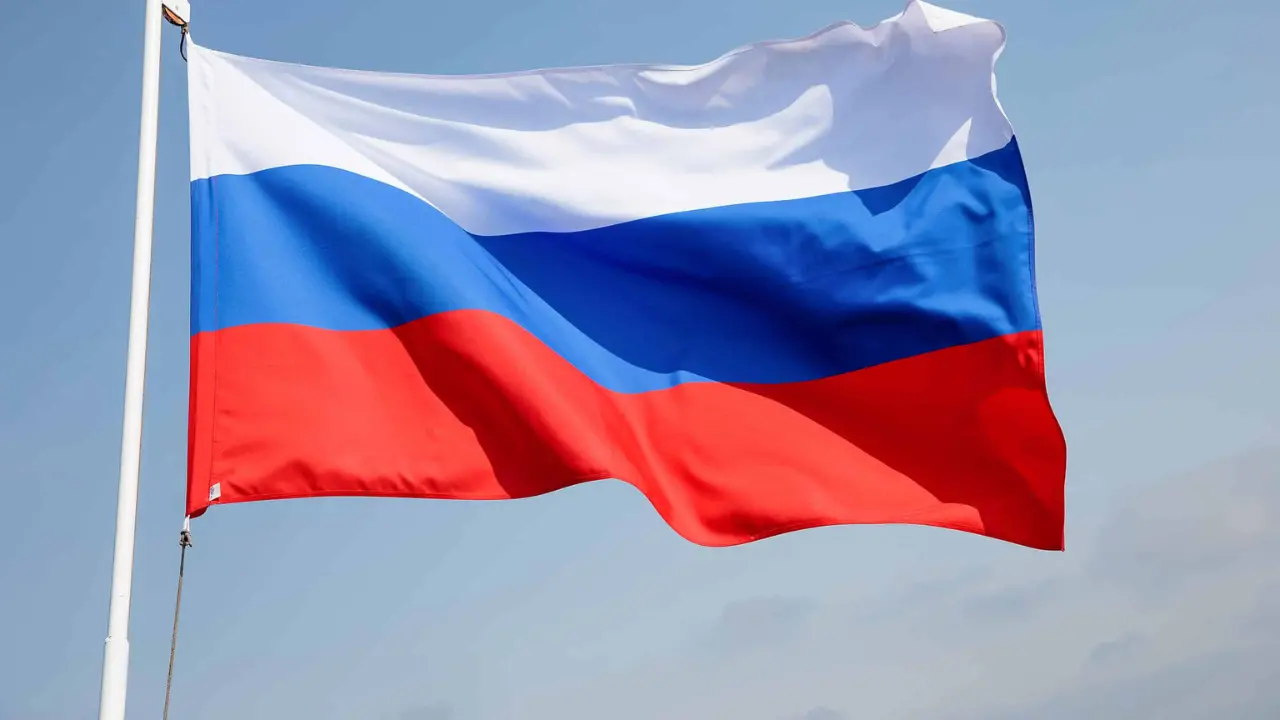The flag of Russia, also known as the “tricolor flag,” represents the Russian Federation. It holds significant political, cultural, and historical importance. In this article, we will look at the Russia’s flag symbolism, design, and meaning, as well as its rich heritage and the values it represents.
History and Evolution of the Russia Flag
The Russian flag has a long history dating back to the 17th century. Initially, Russia used a tricolor flag of white, blue, and red, with each color representing a different aspect of the state. Variations of the flag emerged over time, influenced by political changes and ruling dynasties. After the collapse of the Soviet Union in 1991, the Russian Federation officially adopted the current flag design.
Design and Colors of the Flag
The Russian flag consists of three equal-width horizontal stripes, with white on top, blue in the middle, and red on the bottom. It symbolizes nobility and purity with white, loyalty, and faithfulness with blue, and courage and valor with red. The law prescribes the proportions of the flag to ensure consistency and appropriate representation.
The symbolism of the Russia Flag
The colors of the Russian flag represent the Russian people’s values and aspirations. White is associated with peace, spirituality, and sincerity. Blue represents truth, loyalty, and faith, whereas red represents bravery, strength, and love for one’s homeland. The tricolor arrangement honors the peaceful coexistence of the nation’s various regions, cultures, and traditions while reflecting both its unity and diversity.
Political and Cultural Significance
The Russian flag is extremely significant politically and culturally for the country. It serves as a representation of pride, unification, and national identity. During official ceremonies, sporting events, and national holidays, the Russian populace is inspired by patriotism as the flag is prominently flown. It represents the country’s historical legacy, achievements, and aspirations for the future.
Flag Etiquette and Protocol
Respecting the Russian flag and following specific procedures when flying and handling it is of the utmost importance. It is crucial to ensure that the flag never touches the ground or is used disrespectfully, and it should always receive respectful treatment. During ceremonies, it is necessary to play national anthems while raising and lowering the flag as a sign of respect for the national emblem. To demonstrate reverence for this symbol of the nation, individuals must comprehend and adhere to these etiquette rules.
Public Opinion and Perception
The Russian people generally have a positive opinion of the Russian flag because it represents their culture, values, and sense of pride in their country. The general public’s perception can vary, and some people might connect the flag to particular political ideologies or historical occurrences. Overall, the Russian flag continues to serve as a unifying image that captures the nation’s overall identity.
Controversies and Alternative Flags
The Russian flag has generated discussion and controversy, as with any national symbol. During official ceremonies, sporting events, and national holidays, the flag is prominently flown, actively inspiring patriotism among the Russian populace. However, the current flag design has remained unchanged since its adoption, reflecting the stability and continuity of the Russian Federation.
International Recognition and Usage
Internationally, the Russian flag actively receives recognition as the official flag of the Russian Federation. Moreover, it actively signifies the nation’s sovereignty and diplomatic presence, displaying it at embassies, consulates, and international gatherings. The flag’s distinctive tricolor pattern makes it simple to recognize, further increasing its visibility internationally and its association with Russia.
The Russia Flag in Sports
Athletes proudly fly the Russian flag during international competitions, which has a big impact on sporting occasions. The flag symbolizes the nation’s sporting prowess, cooperation, and spirit of competition. Athletes can find inspiration in it, and it represents their support for their countrymen.
Flag Day Celebrations
On August 22nd of each year, Russia joyously observes Flag Day to commemorate the year the tricolor flag was first flown. Among the events held to celebrate the day are parades, cultural events, and exhibitions that specifically emphasize the importance and background of the flag. It presents an opportunity for the nation to unite and reflect on the importance of its national emblem.
The Russian Flag as a Tourist Attraction
The Russian flag has established itself as an iconic representation of the nation’s rich cultural and historical heritage. Visitors to Russia frequently encounter the prominent display of the flag in public areas, historic sites, and museums. It draws tourists and fosters a sense of place and belonging while acting as a visual representation of the country’s identity.
Educational Importance of Flags
As a way to learn about a nation’s history, culture, and values, flags, like the Russian flag, have educational value. Schools and educational institutions frequently include lessons about the flag in their curricula, actively instilling in students a greater sense of patriotism and heritage.
Future Trends and Evolution
Flags may undergo alterations or adaptations as societies and times change to reflect new beliefs and values. While the design and symbolism of the Russian flag have remained constant, discussions about potential updates to reflect modern aspirations and inclusivity may take place in the future.
Conclusion
The Russian flag is a potent representation of the country’s identity, cohesion, and pride. The tricolor pattern and symbolic hues of the flag reflect the fundamental ideals and aspirations of the Russian people. The Russian flag unites people and serves as a constant reminder of Russia’s history and potential because of its significant cultural history and global recognition.
Frequently Asked Questions
What does the Russian flag stand for?
The Russian flag actively symbolizes the values of peace, loyalty, bravery, and a sense of pride for the country.
The Russian flag’s current style was adopted when?
1991 saw the official adoption of the Russian flag’s current design.
In what way is the Russian flag controversial?
Alternative flag designs have been discussed, but the current flag is still in use.
What sporting uses does the Russian flag have?
To represent their country’s superiority, athletes proudly fly the Russian flag during international sporting events.
When is Russian Flag Day?
On August 22, we commemorate the adoption of the tricolor flag by celebrating Flag Day.

